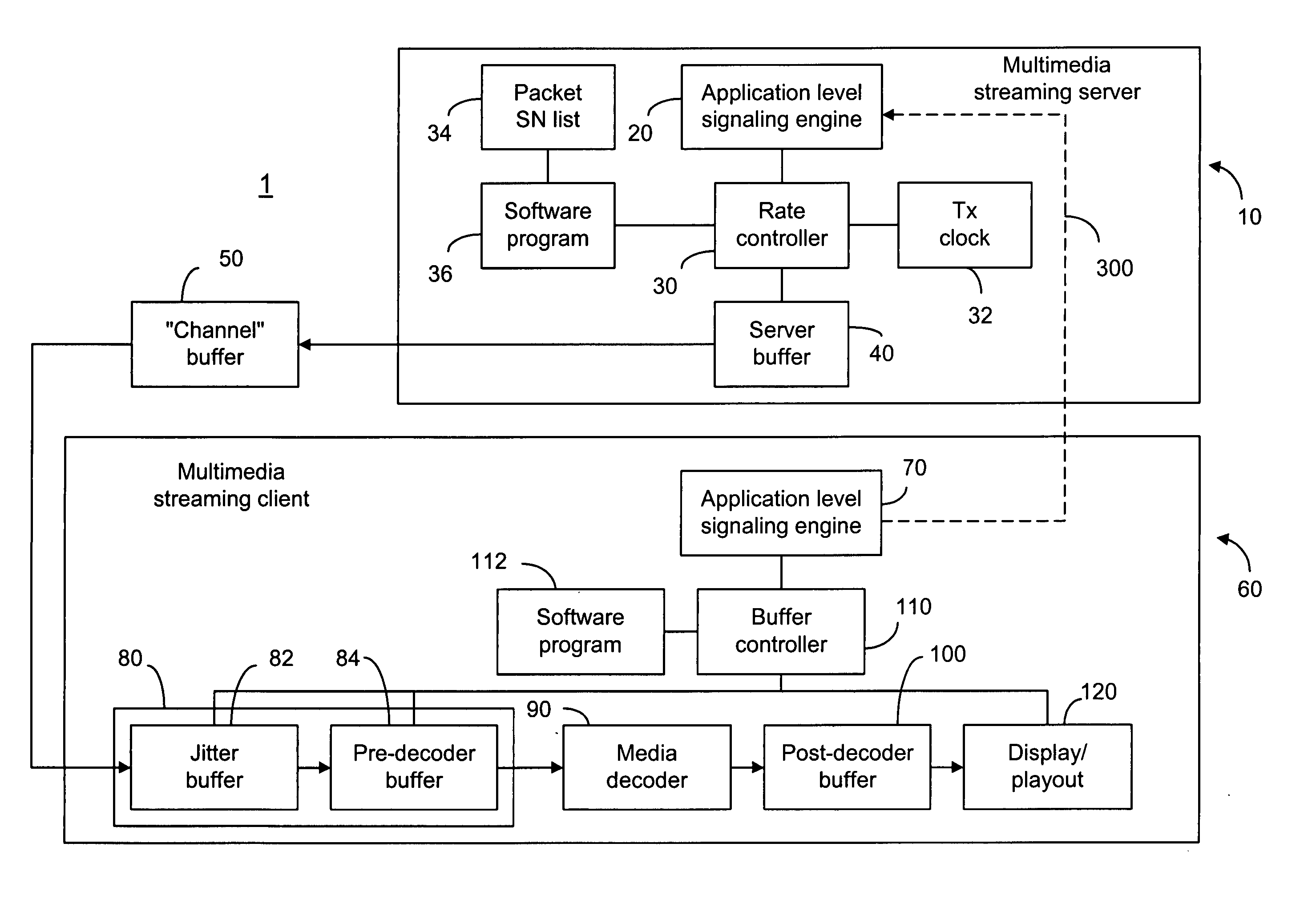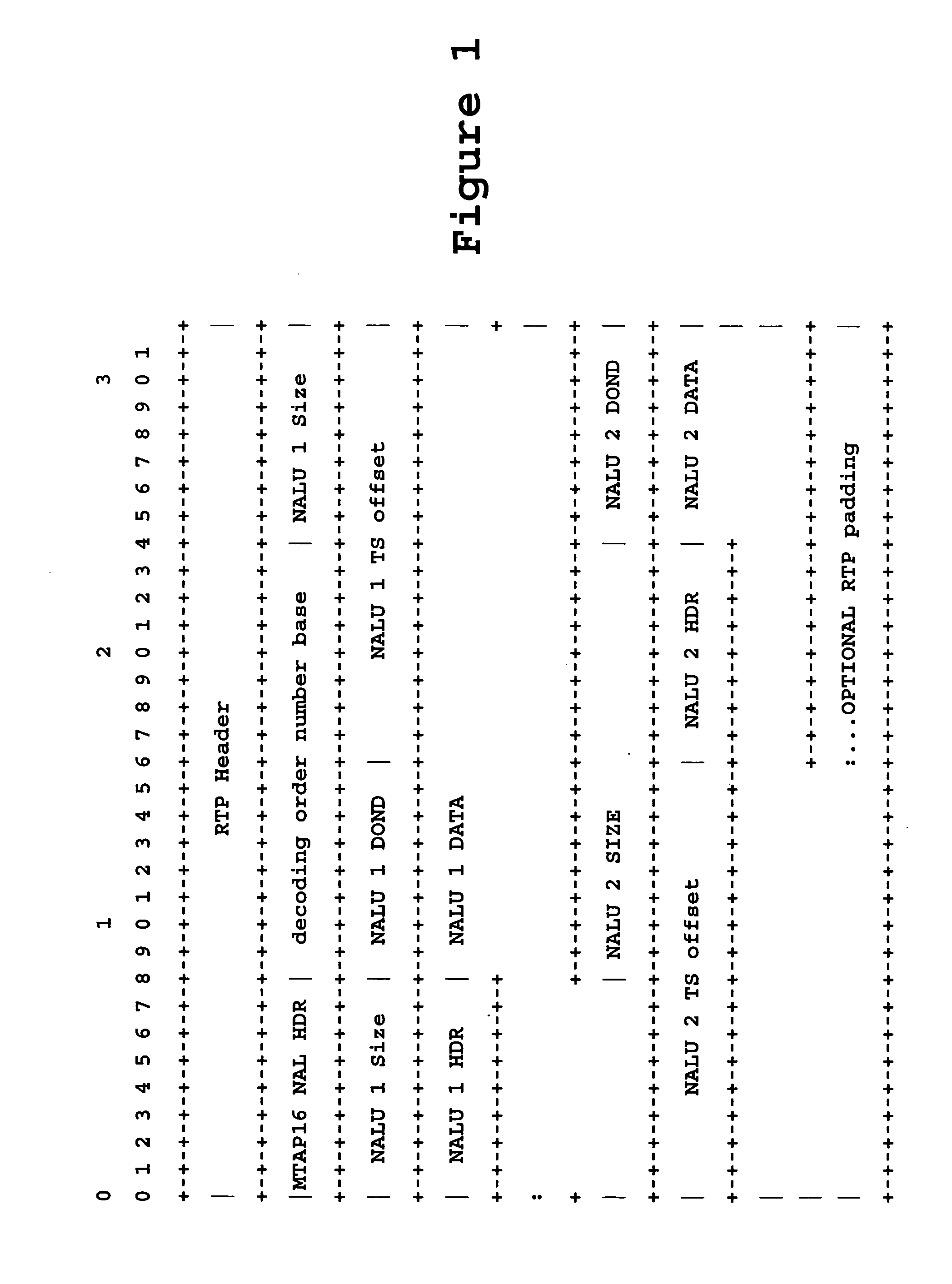Buffer level signaling for rate adaptation in multimedia streaming
a buffer level and rate adaptation technology, applied in the field of multimedia streaming, can solve the problems of dropping packets, affecting the implementation, and affecting the rate of multimedia streaming,
- Summary
- Abstract
- Description
- Claims
- Application Information
AI Technical Summary
Benefits of technology
Problems solved by technology
Method used
Image
Examples
Embodiment Construction
[0064] The present invention provides a method of buffer level signaling so as to allow the server in a multimedia streaming network to perform rate adaptation in codecs such as H.26L, for which packet transmission order is different from decoding order. The buffer level signaling method, according to the present invention, is based on information about the next packet to be decoded. The sequence number of the next packet to be decoded is referred to as NDSN. Several implementations are described below:
IMPLEMENTATION I
[0065] The receiver reports to the sender information of the next packet to be decoded based on the smallest y value. Based on the received NDSN, the server can identify the packet to be decoded next. As such, the sender can derive the correct status of the receiver buffer. Using the set of x and y values given in the background section, this implementation can be illustrated as follows:
[0066] When packets x+4, x+5, x+6 and x+7 have been received, their correspondi...
PUM
 Login to View More
Login to View More Abstract
Description
Claims
Application Information
 Login to View More
Login to View More - R&D
- Intellectual Property
- Life Sciences
- Materials
- Tech Scout
- Unparalleled Data Quality
- Higher Quality Content
- 60% Fewer Hallucinations
Browse by: Latest US Patents, China's latest patents, Technical Efficacy Thesaurus, Application Domain, Technology Topic, Popular Technical Reports.
© 2025 PatSnap. All rights reserved.Legal|Privacy policy|Modern Slavery Act Transparency Statement|Sitemap|About US| Contact US: help@patsnap.com



